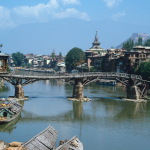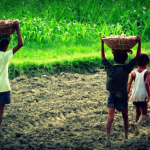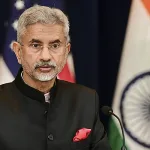With its rich heritage, cultural diversity, and breathtaking destinations offering a wealth of possibilities, India’s tourism industry is emerging as a global favourite. As a key driver of economic growth, the tourism sector not only promotes development but also improves the quality of life by creating various job opportunities. The tourism sector is witnessing a remarkable recovery post pandemic, with domestic tourism leading the way.
With International Tourist Arrivals (ITAs) surpasses pre-pandemic levels and expected to reach 20 million by 2025, domestic tourism remains a key driver, with over 3 billion visits anticipated. Segments like MICE and luxury tourism are also expected to expand, attracting high-spending tourists to metropolitan and heritage sites and cities. With continued investment in tourism infrastructure, policy support, and a focus on sustainable and experience-driven travel, India is on the road to becoming one of the world’s top tourism destinations, contributing significantly to economic growth, employment generation, and cultural exchange on a global scale.
The Government of India promotes tourism as a vehicle for social inclusion, employment and economic progress. Committed efforts are being made to transform India into a desirable tourist destination, and the tourism sector is becoming a key driver to making India a developed country by 2047.
Domestic tourism plays a crucial role in the overall growth of India’s tourism sector. The Government of India has taken various initiatives to promote domestic tourism, such as Dekho Apna Desh, PRASHAD, Vibrant Village Programme, SWADESH 2.0, and Regional Connectivity Scheme – Udaan.
These efforts focus on raising awareness about key tourist destinations and products within the country and facilitating growth in tourism-related activities. Due to these continuous efforts, India has shown a positive trajectory in domestic tourism. In 2023, 2509.63 million Domestic Tourist Visits (DTVs) were recorded (provisionally) compared to 1731.01 Million DTVs in 2022. Further, in 2022-23, 76.17 million direct and indirect jobs were created due to tourism in India, compared to 70.04 million direct and indirect jobs created in 2021-22.
Over the last few years, India has built extensive tourism infrastructure worth approximately $1 billion (Rs. 7,000 Crores) to improve the tourist experience. To make India a global travel destination, the country’s tourism products are being promoted holistically within the country and overseas markets.
Tourism in India has grown remarkably over the past two decades, with government initiatives, infrastructure development, and global branding contributing to this success. To boost tourism in India, schemes like Swadesh Darshan 2.0, Vibrant Village Programme, PRASHAD (Pilgrimage Rejuvenation and Spiritual Augmentation Drive), and Paryatan Mitra have been started. At the same time, the government is taking key steps to develop adventure and sustainable tourism. Technological integration and diversification into niche markets will help the tourism industry increase its growth.
It is due to these efforts by the government that the Travel and Tourism Development Index 2024 (TTDI) ranked India at 39th among 119 countries in the latest 2024 report published by the World Economic Forum. India’s score has improved in three areas prioritisation of travel & tourism, safety & security, and health & hygiene.
This growth projection underscores the sector’s resilience and potential, driven by factors such as increasing domestic travel, the revival of international tourism, and enhanced infrastructure. The revenue trend indicates a significant shift, with package holidays expected to become the primary revenue generator in 2024, potentially reaching 65 million travellers by 2028.
The travel and tourism sector in India is not only a key contributor to the economy but also a dynamic and evolving industry. In 2023, the tourism industry recorded approximately USD 20 billion in revenue, with hotels accounting for the largest share.
The industry’s growth is fuelled by resurgence in domestic and international tourism, rising interest in adventure and spiritual travel, and continuous advancements in infrastructure. These factors collectively highlight the sector’s robust growth trajectory and its vital role in India’s economic landscape.
India is poised for a significant boost in travel this summer, driven by rising disposable incomes and a strong desire for vacations post-pandemic. Industry experts predict a 30 per cent increase in domestic travel compared to last year, with popular destinations such as Jammu and Kashmir, Goa, Kerala, and Himachal Pradesh witnessing a surge in bookings. Additionally, international travel is expected to see a 20 per cent rise, particularly to Southeast Asian and European countries. This uptick is set to propel the travel and hospitality sectors towards record growth, solidifying their recovery trajectory.
The hospitality sector in India is evolving to meet the diverse needs of travellers. Heritage hotels, homestays, and carbon-neutral properties are gaining popularity among tourists seeking unique and sustainable travel experiences. These accommodations offer a blend of luxury and local culture, providing guests with an immersive experience.
Smaller, lesser-known destinations are also benefiting from this trend. Heritage properties in places like Rajasthan and Kerala offer a glimpse into India’s royal past, while homestays and luxury properties in newer destinations like Andhra Pradesh and rural areas provide an authentic cultural experience.
With eco-friendly travel on the rise, hotels adopt sustainable practices, such as using renewable energy and eliminating plastics. The wellness travel trend has led to expanded offerings, including advanced fitness centres, spa services, and healthy dining. To satisfy cultural immersion desires, hotels organise guided tours, cultural performances, and regional culinary experiences.
Additionally, there is a rising need for customised and specialised travel plans, offering flexibility and personalisation to suit individual interests and budgets. The influence of digital technology and social media has further personalised travel choices, aligning them with unique hobbies, interests, and lifestyles.
Workcations and weekend escapes are rapidly becoming popular among professionals seeking a balance between work and relaxation. The rise of flexible work arrangements has enabled individuals to combine productivity with leisure in scenic locales. These short getaways allow employees to refresh and recharge, often enhancing creativity and focus. Destinations offering high-speed internet and comfortable workspaces cater to this growing trend, providing the perfect blend of work and play.
Industry experts also say that despite geopolitical challenges, this resilient industry promotes domestic tourism and supports local communities by ensuring strict health protocols and leveraging digital platforms for seamless, safe travel experiences. Collaborating with local businesses, one can create travel packages that highlight regional offerings.
The tourism industry must take responsibility by adopting sustainable practices and offering eco-friendly options. Local communities need to actively participate in decision-making and receive the benefits of tourism development. Lastly, tourists themselves should embrace responsible behaviour and support sustainable initiatives.
By nurturing tourism sustainability, India can showcase its natural and cultural treasures while ensuring their preservation for future generations. A greener and more responsible tourism sector will not only benefit the environment and local communities but also enhance the overall tourism experience.
(The author can be mailed at [email protected]. X/Twitter: @haniefmha)








